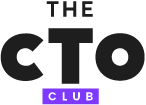AI defines the zeitgeist of this decade. Today, AI maturity levels at most large enterprises have progressed significantly beyond the exploratory phase. In fact, in a survey, 67% of enterprises globally attributed AI to have unlocked a double-digit gross margin improvement for them.
With numbers like that, no wonder companies are scrambling to secure top AI leadership. Between 2019 and 2023, 'Head of AI' roles tripled, and nearly half of the FTSE 100 have already appointed a Chief AI Officer. Even more, similar trends are playing out across mid-sized and large firms in every major sector.
But what’s driving this momentum? And how will the CAIO role reshape the engineering muscle behind modern enterprises? Read on.
The Gold Rush Behind Hiring CAIOs
For years, AI adoption in enterprises has been limited to tactical use cases, such as marketing automation or chatbots. These projects often remained confined to a single department, with limited oversight and short-term value. But that era is ending. With the rise of agentic AI, enterprises are now weaving intelligence into the very fabric of their operations: R&D, supply chain optimization, predictive maintenance, DevOps automation, and fraud detection.
This shift has created a new problem: who owns the AI agenda when it spans every function in the business? For AI to deliver impact at scale, it cannot be treated as a side project. It needs executives at the top who could give structure and direction to the AI projects, and even define measurable business success.
“To make AI work for our customers, we need to deliver AI solutions at scale, not just experiment with AI,” explains Philippe Rambach, CAIO at Schneider Electric.
For him, this meant stepping into a business enabler’s role, scouting for high-impact use cases, stitching together cross-functional teams, and translating abstract AI potential into measurable ROI: faster time to market, lower operational costs, and fewer incidents.
Without this central bridge, AI efforts often sprawl in too many directions with duplicated efforts, lack of coordination, and worse, absence of a solid rollout plan.
Dr. Rosha Pokharel, Chief AI Architect at UST HealthProof, has seen it up close. “They will have no unified AI strategy, no clear ownership, and no governance around risk, ethics, or reuse,” she explains. “Teams also had too many AI POCs with no clarity on execution, or multiple failed pilots.”
That pattern isn’t rare. It shows exactly why the CAIO role matters.
They put the proper guardrails in place with interoperability protocols, ethical guidelines, and governance systems for responsible AI deployment. On the technical front, a CAIO coordinates across fragmented data systems, model lifecycles, and infrastructure layers to ensure models can be deployed, monitored, and continuously improved for both internal and external stakeholders.
As Michael Finley, CTO and Co-Founder of AnswerRocket, puts it, “AI requires a strategy that spans both: how to drive internal adoption for effectiveness and competitive positioning, and external AI to improve every outward-facing aspect of the business.”
The scope is vast, and the demands don’t map cleanly to any one function. “There is too much work and it’s too different from any other C-suite role; it has to operate across them all.”
Inside the Arsenal of Modern CAIOs
For Philippe Rambach, AI is not confined to data science or engineering. It spills into every layer of software development and deployment. “It needs to touch IT, digital, operations, and even legal teams,” he explains. That kind of reach makes a strong case for CAIOs to blend business fluency, domain awareness, and a genuine curiosity for science.
“We need to start by knowing our business and customers first because it’s so easy to be excited with new AI techniques, build shiny proof of concepts, and make press releases, while it’s important to work on what will really impact your business,” comments Philippe. “Second, you need to have enough scientific background to be able to understand this technology, what is smoke and mirrors, and what is true.”
This balance between tech literacy and grounded business judgment is echoed by Camille Fetter, CEO at Talentfoot Executive Search & Staffing. Her firm helps companies scout AI talent, and she often sees soft skills separating high performers from the rest.
"They need a foundational understanding of AI capabilities, but more importantly, they must be strong communicators who can lead ethical conversations across legal, HR, and operations,” she says. “Change management, data governance, and the ability to inspire cross-functional alignment are what set apart high-impact CAIOs.”
And Camille is spot on. CAIO at any organisation is responsible for nurturing the next line of AI leadership by fostering AI solutions and practices through the rest of the organization. Besides, they also need to win internal & external stakeholder confidence, get buy-ins, and channel them towards AI initiatives. All of this is impossible without people & business acumen.
At its core, the CAIO role blends elements of the CTO, CIO, and CDO, while layering on deep expertise in architecting AI/ML solutions:
- Firm grip on supervised, unsupervised, and reinforcement learning, along with deep learning architectures like CNNs, RNNs, and Transformers, helps assess feasibility and guide model selection.
- Fluency in MLOps, container technologies, and cloud-based data platforms to operationalize AI at scale.
- Familiarity with explainability tools such as SHAP and LIME, bias detection methods, fairness metrics, and model interpretability for building trustworthy systems.
- Working knowledge of adversarial ML, differential privacy, data anonymization, and secure federated learning helps ensure compliance and protect sensitive data.
“Before anything else, I think successful CAIOs are systemic thinkers who operate at the intersection of innovation, governance, and trust,” Philippe remarks.
The Herculean Task for CAIOs
Scaling AI across a large organisation is never as simple as copying a working pilot. What works in one corner often crumbles elsewhere. A model trained on North American purchase patterns might misfire in APAC due to linguistic nuances, cultural shifts, or regulatory constraints.
Even when the technology holds up, rolling it out at scale demands alignment from risk, legal, and business teams, each with their own priorities and red lines. The CAIO’s job is to navigate these fragmented environments and still lay down common standards for data governance and business investments.
Platform integration brings its own headaches. Modern AI pipelines don’t always gel with legacy ERP systems. Add to that the variability in AI fluency across business units, and scaling becomes less about technology and more about orchestration.
On the people's side, CAIOs are often pulled into turf wars over ownership. “We’ve seen marketing, product, IT, and digital teams all make a case for owning an AI strategy,” says Camille. “In these situations, the CAIO’s success hinges on their ability to act as a unifier, not a siloed function.”
Rather than getting caught in ownership debates, Philippe Rambach believes organizations should zoom out and rethink the questions they’re asking about AI. Instead of “what AI can do,” teams should ask “what business problem are we trying to solve?” At Schneider Electric, they created a framework that encourages innovation within clear boundaries.
“Every use case is evaluated for business impact, explainability, and security. We work closely with legal and other stakeholders to ensure trust and compliance are built in from day one.”
Are CAIOs the New CIOs or the Next CDOs?
The Chief AI Officer is pivotal to organizations eyeing to operationalize AI at scale with accountability, clarity, and strategic focus. While the future of the role may differ across industries, its current relevance is clear.
In AI-first and highly regulated industries, the CAIO is likely to stay firmly in place. Their role is critical in steering innovation, driving measurable value, and anchoring compliance. Unlike past waves of emerging tech, AI touches legal liability, ethics, and public trust – areas that demand ongoing executive oversight.
Technologies like data or ITOps have had their moment, but AI operates at a deeper, more sensitive layer. As regulations evolve through frameworks like GDPR and CCPA and risks become harder to predict, organisations will need a steady hand at the C-suite level to manage the fallout and shape responsible adoption. The pressure mirrors what once made the CIO role non-negotiable during the height of digital transformation.
However, in more utility-driven sectors, the picture might look different. Once AI systems mature and practices stabilize, the role of CAIO could fold into broader technology leadership. CTOs or CIOs may absorb AI oversight, much like chief data officers did once data literacy spread across functions.
As AI tools become more widely available and less of a competitive edge, companies may start to question whether a dedicated AI leadership role is still necessary. Tight budgets and overlapping responsibilities could also push organisations to merge roles and streamline their tech leadership structure.
But perhaps the clearest marker of a CAIO’s success is when their framework becomes muscle memory across the organisation. Then, AI will no longer need a champion because it’s already part of the company’s DNA. Until then, their work is far from done.
Want more insights like this? Subscribe to The CTO Club newsletter.



